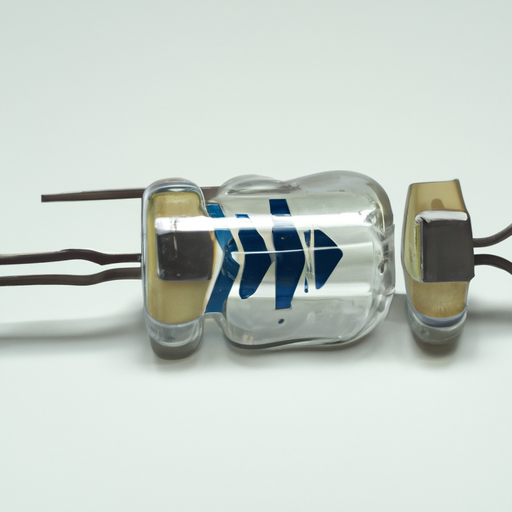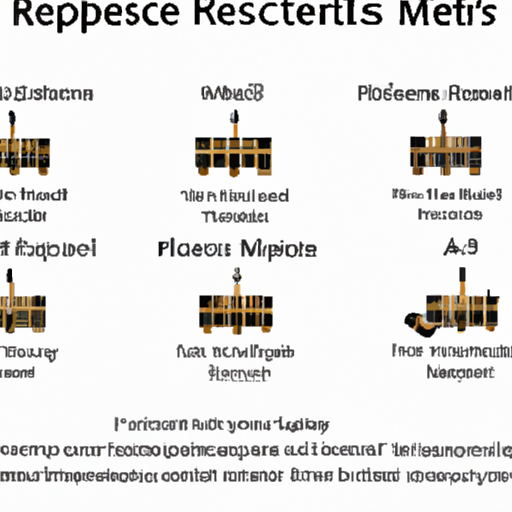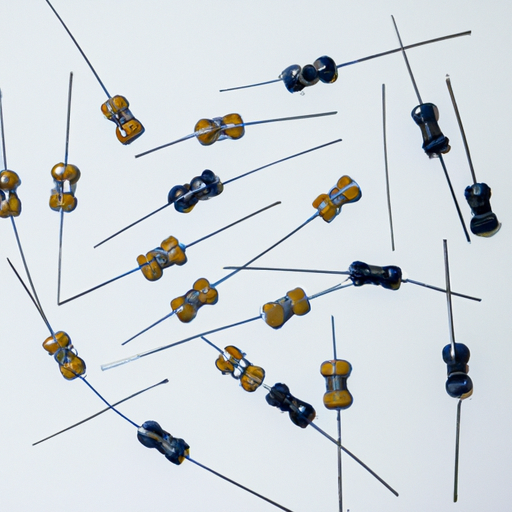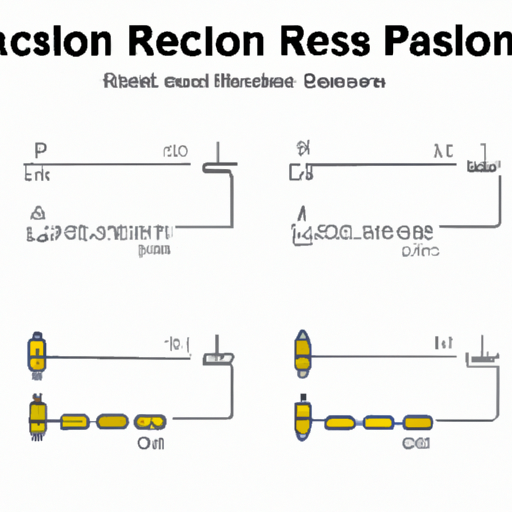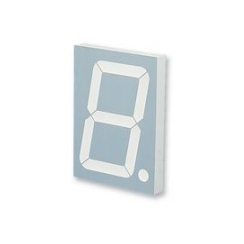What are the main parameters of popular resistors?
What are the Main Parameters of Popular Resistors?
I. Introduction
A. Definition of Resistors
Resistors are passive electronic components that limit the flow of electric current in a circuit. They are fundamental to the operation of electronic devices, serving various roles such as controlling voltage and current levels, dividing voltages, and protecting sensitive components from excessive current.
B. Importance of Resistors in Electronic Circuits
In electronic circuits, resistors play a crucial role in ensuring that components operate within their specified limits. They help maintain the desired performance of circuits by managing current flow and voltage levels, which is essential for the reliability and functionality of electronic devices.
C. Overview of the Article
This article will explore the main parameters of popular resistors, including their basic characteristics, types, environmental and performance parameters, and applications. Understanding these parameters is vital for anyone involved in electronic design and engineering.
II. Basic Parameters of Resistors
1. Definition and Measurement (Ohms)
The resistance value of a resistor is measured in ohms (Ω) and indicates how much the resistor opposes the flow of electric current. The higher the resistance value, the less current will flow through the resistor for a given voltage, according to Ohm's Law (V = IR).
2. Importance in Circuit Design
Choosing the correct resistance value is critical in circuit design. It affects how components interact, influences signal levels, and determines the overall functionality of the circuit. Designers must carefully calculate resistance values to achieve the desired performance.
1. Definition and Measurement
Tolerance refers to the allowable deviation from the specified resistance value. It is usually expressed as a percentage. For example, a resistor with a nominal value of 100 Ω and a tolerance of ±5% can have an actual resistance value between 95 Ω and 105 Ω.
2. Common Tolerance Values
Common tolerance values for resistors include ±1%, ±5%, and ±10%. Precision resistors may have tolerances as low as ±0.1%, while standard resistors typically fall within the ±5% range.
3. Impact on Circuit Performance
Tolerance affects the accuracy and reliability of circuit performance. In applications where precision is critical, such as in analog circuits or measurement devices, selecting resistors with lower tolerance values is essential.
1. Definition and Measurement (Watts)
The power rating of a resistor, measured in watts (W), indicates the maximum amount of power the resistor can dissipate without overheating. Exceeding this power rating can lead to resistor failure, which may damage the circuit.
2. Importance of Power Rating in Resistor Selection
When selecting a resistor, it is crucial to consider the power rating to ensure it can handle the expected power dissipation in the circuit. This is particularly important in high-power applications where resistors may be subjected to significant current.
3. Consequences of Exceeding Power Rating
Exceeding the power rating can cause resistors to overheat, leading to thermal runaway, physical damage, or even fire hazards. Therefore, engineers must ensure that the power rating of the resistor is adequate for the application.
III. Types of Resistors and Their Parameters
A. Fixed Resistors
Fixed resistors have a constant resistance value and are the most commonly used type of resistor.
a. Characteristics
Carbon composition resistors are made from a mixture of carbon and a binding material. They are known for their high energy absorption and ability to withstand high temperatures.
b. Applications
These resistors are often used in applications where high energy pulses are present, such as in power amplifiers and audio equipment.
a. Characteristics
Metal film resistors are made by depositing a thin layer of metal onto a ceramic substrate. They offer better stability and lower noise compared to carbon composition resistors.
b. Applications
These resistors are commonly used in precision applications, such as in measurement devices and high-frequency circuits.
a. Characteristics
Wirewound resistors are constructed by winding a metal wire around a ceramic or fiberglass core. They can handle high power levels and have low inductance.
b. Applications
These resistors are typically used in power applications, such as in power supplies and motor control circuits.
B. Variable Resistors
Variable resistors allow for adjustable resistance values.
a. Characteristics
Potentiometers have three terminals and can be adjusted to provide a variable resistance. They are often used as volume controls in audio equipment.
b. Applications
Common applications include audio devices, adjustable power supplies, and sensor calibration.
a. Characteristics
Rheostats are a type of variable resistor with two terminals, designed to handle higher currents. They are typically used to control power in circuits.
b. Applications
Rheostats are used in applications such as light dimmers, motor speed controls, and heating elements.
C. Specialty Resistors
Specialty resistors are designed for specific applications.
a. Characteristics
Thermistors are temperature-sensitive resistors that exhibit a significant change in resistance with temperature variations. They can be either NTC (negative temperature coefficient) or PTC (positive temperature coefficient).
b. Applications
Thermistors are widely used in temperature sensing and control applications, such as in thermostats and temperature compensation circuits.
a. Characteristics
Photoresistors, or light-dependent resistors (LDRs), change their resistance based on the intensity of light. They have high resistance in darkness and low resistance in light.
b. Applications
These resistors are commonly used in light-sensing applications, such as automatic lighting systems and light meters.
IV. Environmental and Performance Parameters
1. Definition and Measurement
The temperature coefficient of resistance (TCR) indicates how much the resistance of a resistor changes with temperature, typically expressed in parts per million per degree Celsius (ppm/°C).
2. Impact on Resistance Value
A high temperature coefficient means that the resistor's resistance will vary significantly with temperature changes, which can affect circuit performance, especially in precision applications.
1. Definition and Measurement
The voltage coefficient describes how the resistance of a resistor changes with applied voltage. It is particularly important in high-voltage applications.
2. Importance in High-Voltage Applications
In high-voltage circuits, resistors with low voltage coefficients are preferred to ensure stable performance and prevent resistance changes that could lead to circuit failure.
1. Definition and Types of Noise
Noise in resistors can be thermal noise (Johnson noise) or shot noise. Thermal noise is generated by the random motion of charge carriers, while shot noise occurs due to the discrete nature of charge carriers.
2. Impact on Circuit Performance
Noise can affect the performance of sensitive circuits, particularly in audio and communication applications. Selecting low-noise resistors is essential for maintaining signal integrity.
V. Applications of Resistors
A. Signal Processing
Resistors are used in signal processing circuits to filter, amplify, and modify signals. They help shape the frequency response of circuits and ensure proper signal levels.
B. Voltage Division
Resistors are commonly used in voltage divider circuits to create specific voltage levels from a higher voltage source. This is essential in many applications, including sensor interfacing and reference voltage generation.
C. Current Limiting
Resistors are used to limit the current flowing through components, protecting them from damage. This is particularly important in LED circuits, where resistors prevent excessive current from burning out the LED.
D. Biasing Active Components
In amplifier circuits, resistors are used to set the biasing conditions for transistors and operational amplifiers, ensuring they operate in the desired region of their characteristic curves.
VI. Conclusion
A. Summary of Key Parameters
Understanding the main parameters of resistors—such as resistance value, tolerance, power rating, and environmental factors—is crucial for effective circuit design. Each parameter plays a significant role in determining how a resistor will perform in a given application.
B. Importance of Understanding Resistor Parameters for Circuit Design
For engineers and designers, a thorough understanding of resistor parameters is essential for creating reliable and efficient electronic circuits. Selecting the right resistor can significantly impact the performance and longevity of a device.
C. Future Trends in Resistor Technology
As technology advances, new materials and manufacturing techniques are being developed to create resistors with improved performance characteristics, such as lower noise, higher power ratings, and better temperature stability. Staying informed about these trends will be vital for future circuit design.
VII. References
A. Suggested Reading
1. "The Art of Electronics" by Paul Horowitz and Winfield Hill
2. "Electronic Principles" by Albert Malvino and David Bates
B. Relevant Standards and Guidelines
1. IEC 60115 - Resistors for use in electronic equipment
2. EIA-96 - Standard for Resistor Values
This comprehensive overview of resistor parameters provides a solid foundation for understanding their role in electronic circuits. By grasping these concepts, designers can make informed decisions that enhance the performance and reliability of their electronic devices.


